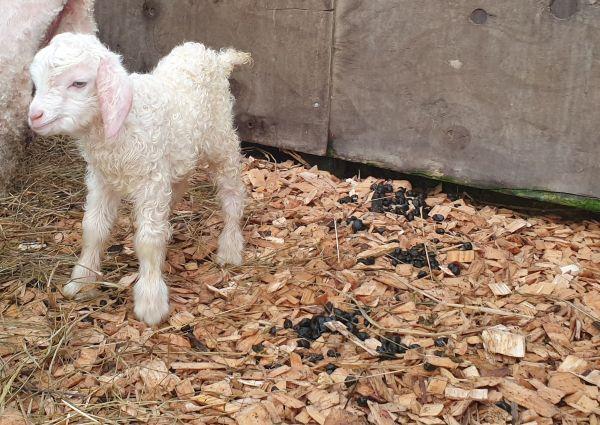
What Your Animal's Poo Is Telling You
Your animal's stools can reveal significant insights into their health, even providing clues about where in the gastrointestinal tract a problem might be occurring. Here are some common signs you might observe and what they could indicate:
Black and Tarry (Sticky) = Melaena
This suggests bleeding in the upper gastrointestinal tract (e.g., stomach, small intestine). As the blood travels through the rest of the gut, it is digested, resulting in a dark, tar-like appearance. Examples include stomach ulcers in lambs with clostridial disease or Mucosal Disease in cattle (the mutated form of Bovine Viral Diarrhoea Virus).
Frank Blood
This indicates bleeding in the lower gastrointestinal tract, specifically the large intestine. Since the blood hasn't passed through much of the digestive system, it retains its bright red color.
Mucus
An increased amount of mucus in the stool is often a sign of inflammation in the large intestine. A common cause of this is coccidiosis.
Urgency and Frequency
These symptoms point to inflammation or irritation of the large intestine and rectum. This irritation can cause "tenesmus," which is the urgent and often painful sensation of needing to defecate.
Loose Diarrhoea
This clearly indicates a gastrointestinal upset, although the underlying causes can be numerous, similar to humans. However, when you observe loose, runny poo that soils the animal's hindquarters, common culprits include internal gut parasites (worms or coccidia), toxicities, and certain wasting diseases. It's important to remember that diseases affecting other organs can sometimes lead to secondary diarrhoea. If the animal doesn't respond quickly to your treatments or appears severely unwell, consult your veterinarian.
"Hose Pipe" Watery Diarrhoea
This often represents a late stage of persistent diarrhoea. However, some diseases are characterized by this description, indicating that the lining of the large intestine has become so thickened that it can no longer absorb water. Water absorption is a crucial function of the large intestine. When this function is compromised, it can appear as if water is being rapidly expelled. This will typically be accompanied by rapid weight loss and wasting. Common examples include Johne's Disease in ruminants and bowel cancers.
Undigested Grain
The presence of undigested grain in the faeces, along with a sickly sweet smell, is a hallmark sign of Rumen Acidosis. This occurs when an animal consumes an excessive amount of easily digestible carbohydrates that the rumen (the large, fermenting stomach chamber) is not accustomed to. This leads to a sudden drop in pH, causing changes in the bacterial flora and acidosis of the blood. This condition can be rapidly fatal if left untreated.
Parasites
Observing gut worms in your animal's stool is normal after a recent deworming treatment. These are weakened or dead worms being expelled. However, if you see worms and the animal has not been recently treated, it suggests a significant internal parasite burden. Tapeworm segments are an exception. Tapeworms reproduce by releasing body segments, which can be seen in the stool even with a normal parasite load. Generally, tapeworms are only a concern in very young animals and tend not to significantly affect older animals.
"Clay-like" Faeces
This describes hard, sticky, pale faeces often seen in milk-fed young ruminants and can indicate milk entering the rumen, a stomach compartment where it shouldn't be. In young animals, milk should bypass the rumen and go directly to the abomasum for proper digestion. When milk enters the rumen, it isn't digested correctly, making the baby feel unwell and reducing its appetite. This can happen in weak or sick animals or due to inappropriate feeding practices. It's crucial to identify and correct the underlying cause promptly and seek veterinary advice.
Orange and Sticky
This is the normal appearance of "meconium," the first stool of a newborn animal. While inside the mother, the baby swallows small amounts of amniotic fluid containing debris like sloughed cells, resulting in the yellow-orange color. After birth, the stool should transition to a milky color. This color will change over time as the animal consumes more solid food, eventually becoming an adult brown color after weaning.
Very Firm Faeces
Very firm faeces in ruminants can sometimes be an indicator of underlying metabolic problems, although it's more commonly associated with dehydration or dietary factors. A common example of dietary factors is a sudden transition from milk bottles to hard food, in hand-reared lambs, kids and calves. If the animal has other signs of illness such as reduced appetite, lethargy, decreased milk production, changes in urine output, or neurological signs, you may well be looking at metabolic disease such as Milk Fever (hypocalcaemia), where the lack of calcium slows down gut function.
It's important to remember that these are general indicators, and a definitive diagnosis often requires further investigation by a veterinarian, including a thorough clinical examination and potentially faecal testing. Observing these changes in your ruminant's faeces and reporting them to your vet can help in the early detection and management of various diseases.

